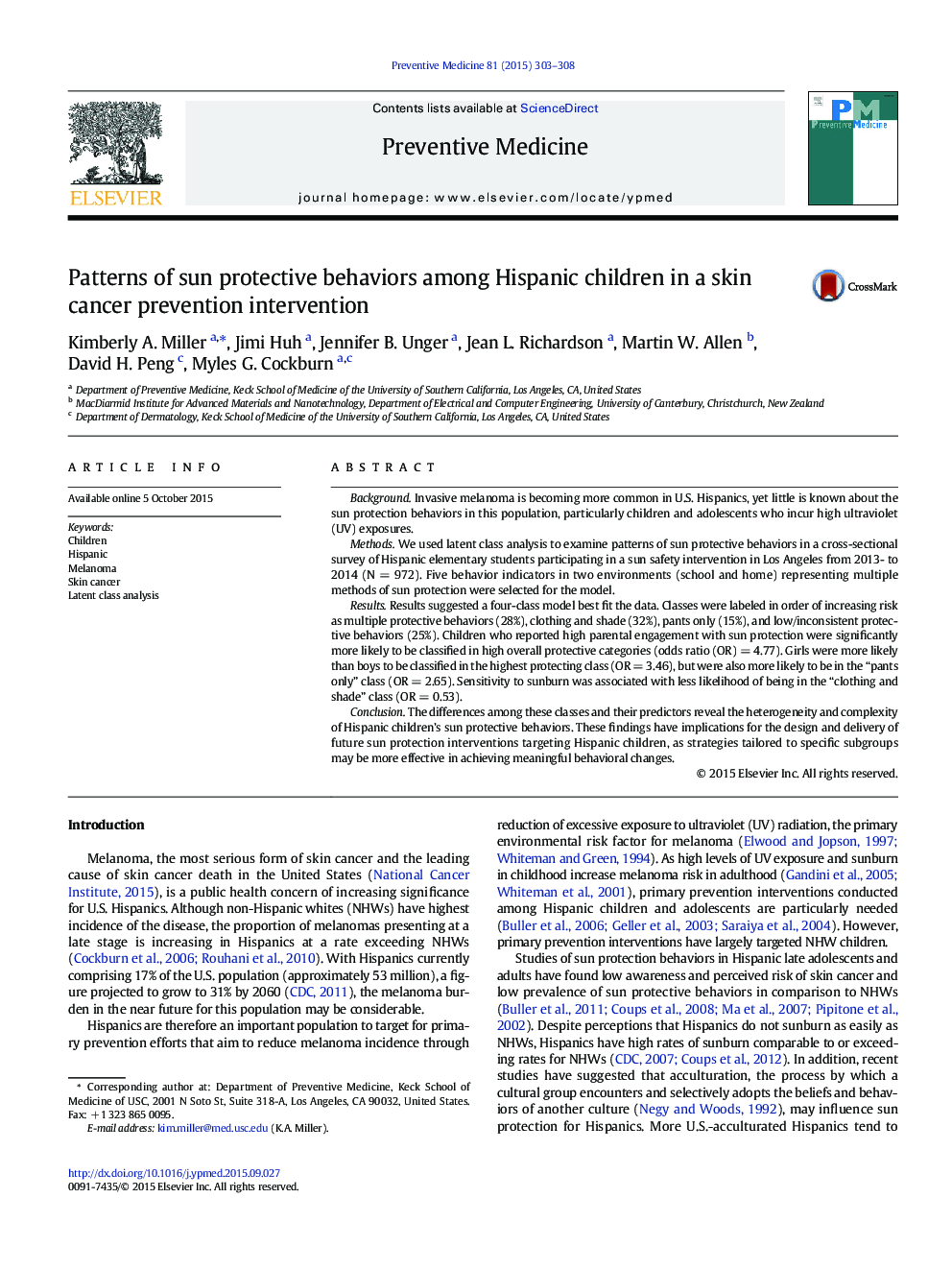| کد مقاله | کد نشریه | سال انتشار | مقاله انگلیسی | نسخه تمام متن |
|---|---|---|---|---|
| 6046454 | 1581633 | 2015 | 6 صفحه PDF | دانلود رایگان |
- We examine sun protection in Hispanic children using latent class analysis.
- Two higher-protecting classes and two lower-protecting classes were found.
- Family sun habits and female gender were associated with higher-protecting classes.
- This study can inform tailored approaches to intervention in this population.
BackgroundInvasive melanoma is becoming more common in U.S. Hispanics, yet little is known about the sun protection behaviors in this population, particularly children and adolescents who incur high ultraviolet (UV) exposures.MethodsWe used latent class analysis to examine patterns of sun protective behaviors in a cross-sectional survey of Hispanic elementary students participating in a sun safety intervention in Los Angeles from 2013- to 2014 (NÂ =Â 972). Five behavior indicators in two environments (school and home) representing multiple methods of sun protection were selected for the model.ResultsResults suggested a four-class model best fit the data. Classes were labeled in order of increasing risk as multiple protective behaviors (28%), clothing and shade (32%), pants only (15%), and low/inconsistent protective behaviors (25%). Children who reported high parental engagement with sun protection were significantly more likely to be classified in high overall protective categories (odds ratio (OR)Â =Â 4.77). Girls were more likely than boys to be classified in the highest protecting class (ORÂ =Â 3.46), but were also more likely to be in the “pants only” class (ORÂ =Â 2.65). Sensitivity to sunburn was associated with less likelihood of being in the “clothing and shade” class (ORÂ =Â 0.53).ConclusionThe differences among these classes and their predictors reveal the heterogeneity and complexity of Hispanic children's sun protective behaviors. These findings have implications for the design and delivery of future sun protection interventions targeting Hispanic children, as strategies tailored to specific subgroups may be more effective in achieving meaningful behavioral changes.
Journal: Preventive Medicine - Volume 81, December 2015, Pages 303-308
